- Solutions
-
Products
-
Resources
Sales Automation Tools | Cirrus Insight by Kristi Campbell View all Blog Posts >Get the App, Get the Sidebar, & Get Your Trial Going HereUnleash limitless growth opportunities by partnering with Cirrus Insight.
- Pricing
Filter By:
The Truth About Email Attachment Tracking (And How to Do It Better)
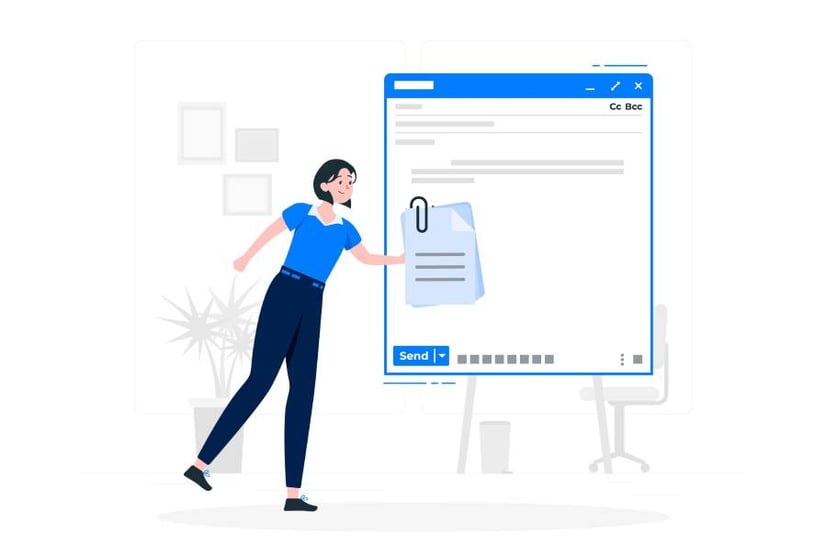
Frustrating, isn't it? You send a sales proposal to a lead… and then, begin to worry whether they've even seen it. Or what was their reaction to your ideas?
Tracking email attachments is one way to provide you with at least some insight into your proposal's performance.
But does email attachment tracking reveal everything you need to know about your leads and how they interact with the content I share?
To answer that question, let's first look at how email attachment tracking actually works.
Vendors offering email attachment tracking create specialized links to your material that route your leads first through the vendor's servers and then to your actual content.
It's a similar process to tracking email opens (something I demonstrated was less effective in a previous post), except instead of a unique image pixel, it's the link that signals activity to the vendor.
If that sounds confusing, here's an example that will illustrate it in practice:
Let's say you send a case study to a lead at the "Consideration" stage of the buyer's journey.
To your audience, the attachment looks like anything else they might have received in a given day.
But that case study has a unique link back to the servers of the software vendor. So when the potential client opens the attachment, the link notifies your vendor's servers and updates your analytics dashboard to reflect an opened attachment.
Makes sense, right?
Sure, but we know now that leads contacted within 5 minutes of engaging with your content are 100x more likely to convert.
So with that in mind…
Does email attachment tracking tell you everything you need to know to take immediate action?
In my opinion, not really. There are 4 big reasons why email attachment tracking falls short:
#1. Firewalls and Security Services Block Tracking Redirects
You now know exactly how email attachment tracking works: by redirecting links to your content.
But you see, that poses a huge problem if you're dealing with companies that have firewalls or email security in place.
That's because, for those leads, the software flags redirected attachments as phishing attempts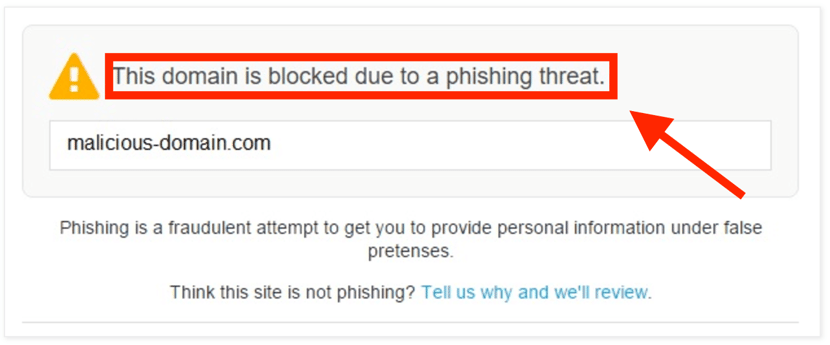 (image source)
(image source)
As a result, your leads won't even try to open the content you're sharing, even if it's valuable to them.
[Not to mention this is more than a little embarrassing to have to explain to a potential client.]
#2. There's No Insight into What Actually Interests Leads
Even if the email attachment tracking works...so what?
You know they opened an attachment, but what does that really tell you?
I'm sorry to say, but when it comes to taking action as a sales rep, email attachment tracking gives you very little.
Sure, you know they clicked an attachment. But you don't know:
- What specifically was interesting to them. What page(s) of the attachment did they spend time viewing? Which did they skip over completely?
- How long they spent viewing the attachment. There's a big difference between a top-of-the-funnel lead who clicks an attachment and scans for a minute, and a sales-ready lead who thoroughly reads your content.
And these details can define whether you're contacting the lead at the precise right time, or calling them too early in the sales cycle.
According to MarketingSherpa, only 27% of leads in your funnel are actually sales-ready.
And you know calling the other 73% before they're ready can potentially ruin your chances of converting them down the road.BONUS: Interested in tracking sales document engagement? Then check out this list of metrics you should be monitoring to close more deals. Download it here >>
#3. Forwarded Emails Won't Work
You know this - not every lead is a decision-maker.
And so, at the early stages of the sales cycle, you may be engaging with an internal champion who forwards your content along to his or her boss for evaluation.
But here's the problem: most email attachment tracking doesn't account for forwarded messages. Your dashboard will look as if the attachment was never opened.
That means you might have a sales-ready decision-maker to contact, but without the right data insights, you'll never know.
#4. And the Same Goes for Group Messages
Group messaging often works the same way.
If you're sending some content to a group of leads, email attachment tracking will only tell you that one member of the group opened the attachment - not who specifically opened it.
So, what's the alternative, if email attachment tracking won't work?
Though email attachment tracking likely isn't the solution for you, there's a simple, better way to know whether your leads are actually interested in your content:
Try Tracking Their Engagement Instead
I know what you're thinking:
Isn't engagement a marketing metric? How's that supposed to help me as a salesperson?
Engagement tells you exactly what interests your leads, the moment they show interest.
Here, let me explain a bit further. As a salesperson, you want to know two things:
- What does a lead want to buy; and
- When do they want to buy it
And that's why engagement tracking makes the most sense. It answers both of those questions by going beyond whether someone opened the attachment to surface key insights about how your leads interacted with the content.
Let's look at that same example from before to demonstrate:
You've sent a case study to a lead in the "Consideration" stage of the buyer's journey. Here's a look at the insights you'll see if you're tracking customer engagement: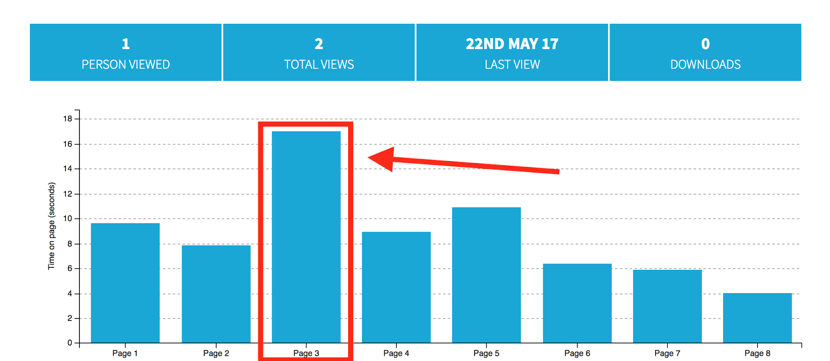 The dashboard shows you that your lead spent the most time reviewing a specific product offering on Page 3 of your case study. Based on that information, you might decide to focus future content or your conversations specifically around that product.
The dashboard shows you that your lead spent the most time reviewing a specific product offering on Page 3 of your case study. Based on that information, you might decide to focus future content or your conversations specifically around that product.
But that's only one piece of the equation - you're also interested in knowing when your lead is ready to buy. That's where some sales enablement tools can be a huge help.
Take a look at the notifications you receive: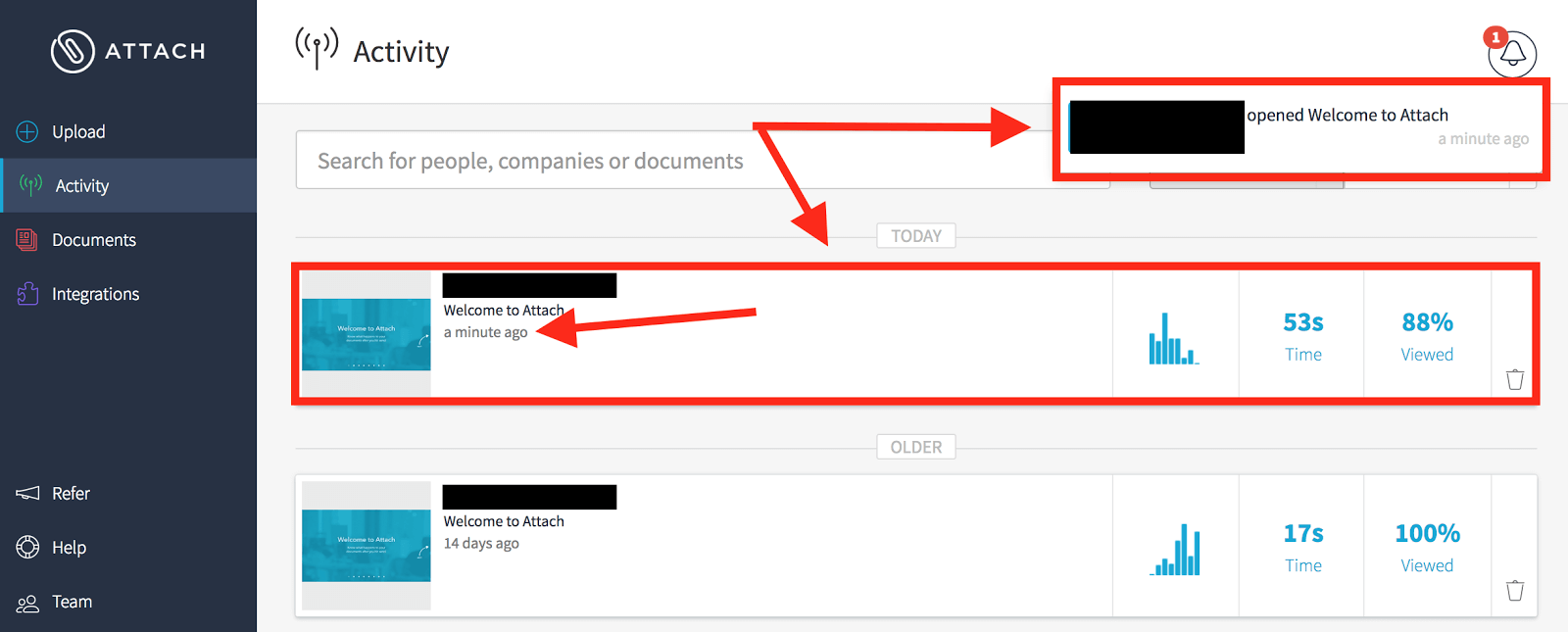 You're looking at real-time data, so you know you can quickly follow-up with the leads showing signs of being "sales-ready."
You're looking at real-time data, so you know you can quickly follow-up with the leads showing signs of being "sales-ready."
And here's one final benefit that I mentioned in my previous post on tracking email opens: engagement also helps you get in touch with the true the decision maker.
When you forward a message, new users need to enter their information to see the content. That means you can quickly determine who has the authority to pull the trigger on your solution.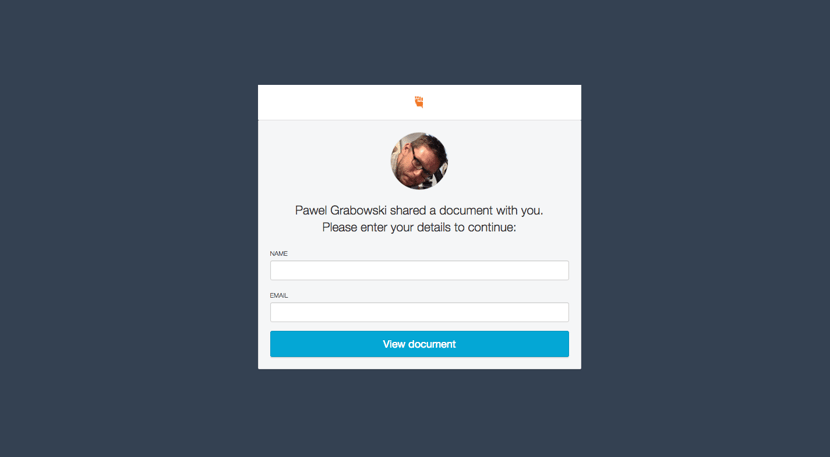
So you see, tracking engagement solves your biggest content problems.
You may have started out thinking email attachment tracking had everything you were looking for, but engagement offers far more insight into the metrics that matter most to you as a salesperson.
Dig into the details behind how your leads find value from the content you share by tracking their engagement.

.png?width=1268&height=1772&name=Sidebar-C%20(1).png)
